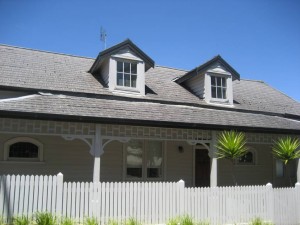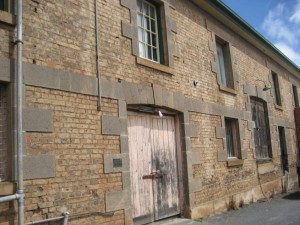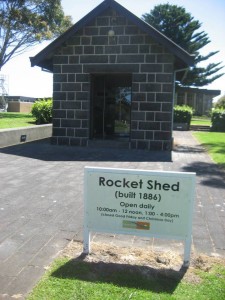There’s some controversy over who was the first settler in Portland. William Dutton built a house there first but as he was a whaler he only spent part of the year there, Edward Henty landed in Portland in November 1834, built a house and turned the first sod (you can see the plough he used in the History Museum), as he was living there full-time Henty is considered the first settler in Portland and therefore in Victoria as Melbourne was settled in 1835.

There are about 200 historical buildings but the very accessible walk only takes in about 50 of them. Most of the buildings are within a few hundred metres, by the time you look at the house, take a photo and read what the pamphlet has to say about it the walk can take around two hours. We divided it up and went back to our room for lunch, it felt a bit strange as one of the houses is right next to our building so we’d walked right on past.
This walk takes in the church where Mary MacKillop prayed and taught. Portland was her first port of call in Australia and where she found most of her inspiration. I believe where we stayed was actually on (or almost on) the site of her mother’s house, there was even a well at the back that is labelled as Flora MacKillop’s well. I’ll do more on this next week.
Many of the buildings are made from Bluestone Blocks, this is a fairly strong and easily workable basalt. It lasts really well with many buildings from the early days only needing a bit of a clean to come up to snuff. You could tell the buildings that cost more as the stone was dressed very nicely at the front, instead of having a rough texture the stonemasons had made a smooth texture.

There were many shipwrecks off the coast of Portland. Some of the people survived and some did not but those who did were often saved by the people on shore. They used a system with a rocket and rocket launcher to send a line and instructions across to the ship, these instructions helped the people on board to tie a subsequent and heavier line securely so they could transport everyone to shore using a Breeches Buoy. The Admella was one shipwreck, the survivors clung to the wreck for most of a week before some of them were successfully rescued, it took many attempts. The SS Admella was a passenger steamship and took its name from its route of Adelaide-Melbourne-Launceston. There is much more on these shipwrecks in the Maritime Discovery Centre.

You might have noticed I’m only concentrating on the history of the white man in Portland and that’s because I saw very little about the native Aborigines. There were many acknowledgments to them but that was all.

